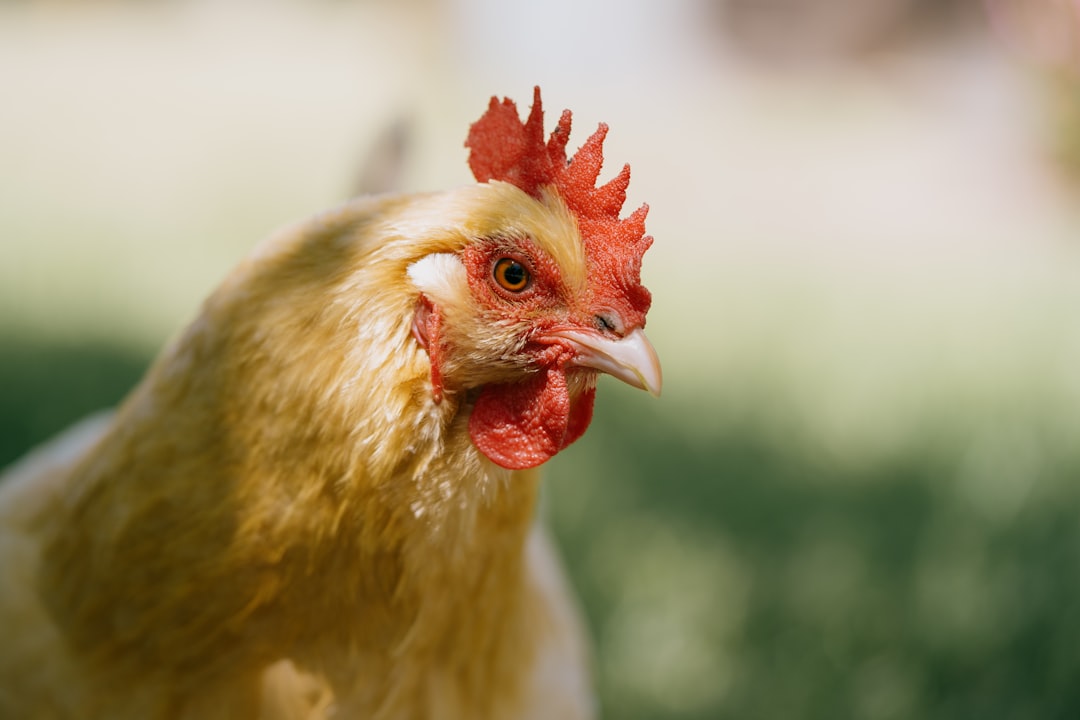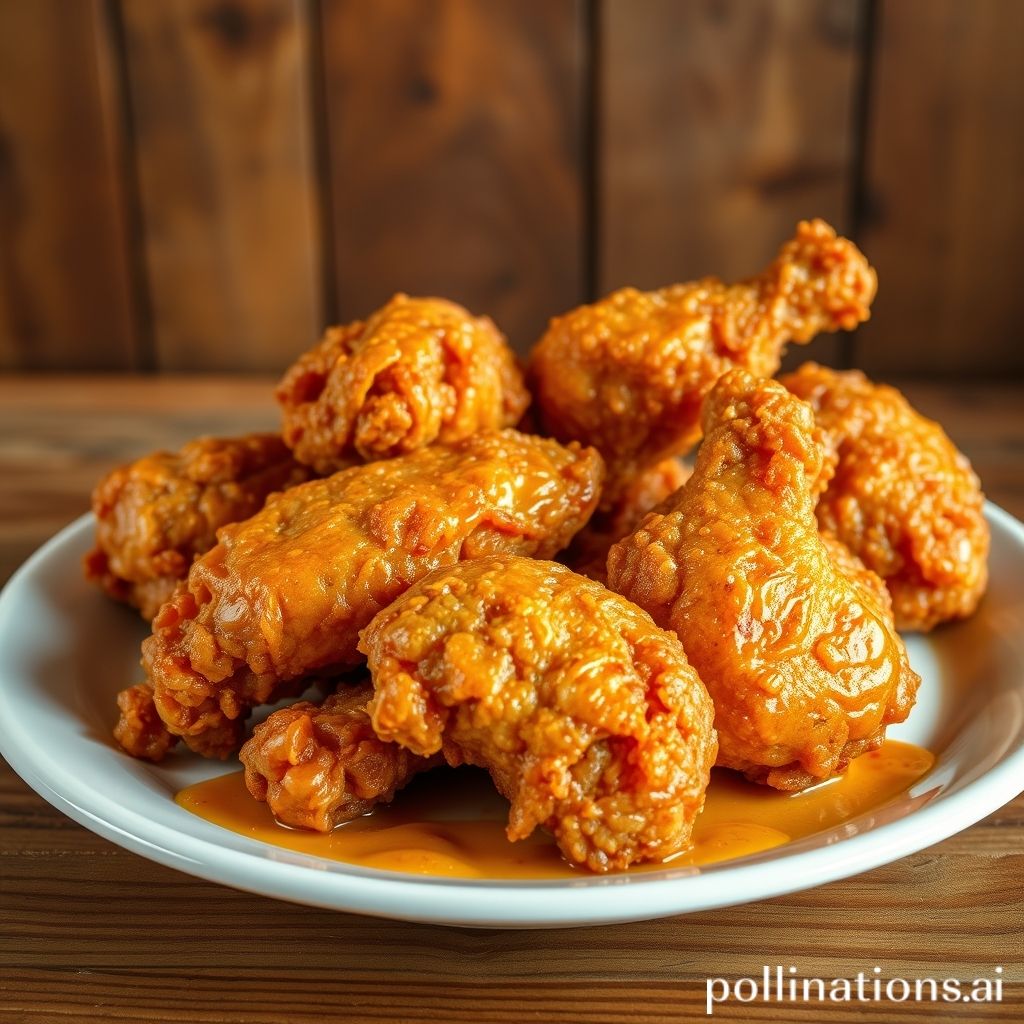Table of Contents
- Introduction
- Ingredients and their benefits
- Marinating the chicken in buttermilk
- Preparing the coating mixture
- Oven-frying process for a healthier option
- Tips for achieving crispy buttermilk chicken
- Serving suggestions and complementary side dishes
- Storing and reheating instructions
- Common mistakes and how to avoid them
- Conclusion
- Frequently Asked Questions
Introduction
Welcome to a culinary adventure where every bite promises crunch and flavor! Crispy, golden-brown, and bursting with taste, oven-fried buttermilk chicken is a healthy twist on a classic favorite. Get ready to unlock the secrets to achieving that perfect crispiness without the deep frying!
But first, let’s gather our ingredients:
- 1 cup buttermilk
- 1 tablespoon hot sauce
- 4 boneless skinless chicken thighs
- 1 cup flour
- 1 teaspoon paprika
- 1 teaspoon garlic powder
- 1 teaspoon onion powder
- 1 teaspoon salt
- 1/2 teaspoon black pepper
- Cooking spray
Ingredients and their benefits
When preparing Oven-Fried Buttermilk Chicken, the ingredients you choose play a crucial role in both taste and nutrition. First and foremost, buttermilk is used to marinate the chicken. It helps tenderize the meat, making it juicy and flavorful, while adding a slight tang. Buttermilk is also a source of probiotics, contributing to gut health.
Chicken is the star ingredient. It’s a high-protein, low-fat meat, providing essential amino acids necessary for muscle growth and repair. Opting for skinless chicken can further reduce fat content.
Next, whole wheat flour is often used as a coating. It adds a crunchy texture while offering more fiber compared to regular flour, benefiting digestive health.
Spices and herbs like paprika, garlic powder, and thyme not only enhance the flavor but also bring antioxidants that can boost immunity.
Olive oil is usually sprinkled on the chicken before baking. It’s a healthier fat option, rich in monounsaturated fats that support heart health.
Finally, a dash of salt and pepper can elevate the dish, though it’s wise to keep salt levels moderate to maintain healthy blood pressure levels.
Marinating the chicken in buttermilk
Marinating chicken in buttermilk is a game-changer when it comes to making oven-fried buttermilk chicken. The process is simple yet incredibly effective, providing several benefits that elevate the dish to a new level. Buttermilk is slightly acidic, which helps to tenderize the chicken by breaking down proteins in the meat. This results in a juicier, more tender texture that is delightful with every bite. Additionally, the buttermilk adds a subtle, tangy flavor that complements the savory coating and seasonings beautifully.
To marinate the chicken, immerse the pieces in buttermilk, ensuring they are fully covered. You can add spices or herbs to the buttermilk for an extra layer of flavor. Let the chicken marinate in the refrigerator for at least four hours, or preferably overnight. The longer the marination, the more flavorful and tender the chicken will be.
Once the marination is complete, you can proceed with coating the chicken in your chosen breading mixture before baking. The buttermilk acts as a binding agent, helping the seasoning and breading stick to the chicken, ensuring a crispy and flavorful crust when oven-fried. Marinating the chicken in buttermilk is a simple step that makes a significant difference in the final dish.
Preparing the coating mixture
Preparing the coating mixture for oven-fried buttermilk chicken is a crucial step that ensures a crispy and flavorful crust. Begin by gathering your ingredients: all-purpose flour, cornmeal, salt, pepper, paprika, garlic powder, onion powder, and any other spices you prefer. In a large bowl, combine one cup of all-purpose flour and half a cup of cornmeal. The cornmeal adds an extra crunch to the coating, enhancing the texture of the chicken. Next, add one teaspoon of salt, half a teaspoon of black pepper, and one tablespoon of paprika. Paprika not only adds color but also a subtle, smoky flavor. Include half a teaspoon each of garlic powder and onion powder to elevate the taste. Mix all the ingredients thoroughly until well-combined.
To add a personalized touch, consider incorporating herbs like thyme, rosemary, or oregano, finely chopped and mixed into the dry ingredients. This aromatic blend will infuse into the chicken as it bakes, providing a depth of flavor. It’s important to evenly coat each piece of chicken in this mixture, ensuring all sides are covered for uniform crispiness. Once your coating mixture is ready, you can proceed to coat the buttermilk-marinated chicken breasts or thighs in preparation for baking.
Oven-frying process for a healthier option
The oven-frying process is an excellent way to enjoy buttermilk chicken without the extra calories and fat that come from traditional frying methods. The key to achieving a crispy, golden exterior while maintaining a juicy interior lies in the preparation and the cooking technique.
First, marinate the chicken in buttermilk for several hours or overnight. This helps to tenderize the meat and infuse it with flavor. After marinating, coat each piece in a mixture of flour, breadcrumbs, and your favorite seasonings. This dry coating is essential for creating that desirable crispy texture.
Preheat your oven to a high temperature, typically around 425°F (220°C), and place a wire rack on a baking sheet. The wire rack allows hot air to circulate around the chicken, ensuring even cooking on all sides. Lightly spray the coated chicken with cooking oil to enhance the crispiness.
Place the chicken on the rack and bake it in the preheated oven. Turning the pieces halfway through the cooking process can help to achieve an even, golden brown finish. The result is a healthier alternative to fried chicken, offering the same delicious taste and satisfying crunch without the guilt.
Tips for achieving crispy buttermilk chicken
To achieve crispy oven-fried buttermilk chicken, it’s essential to follow a few key tips. First, marinate the chicken in buttermilk for at least a few hours, ideally overnight. This not only tenderizes the meat but also adds a tangy flavor that enhances the dish.
Next, ensure the chicken is thoroughly coated with a crispy breading. Use a mixture of flour, breadcrumbs, and spices for the coating. For an extra crispy texture, consider incorporating some cornstarch or panko breadcrumbs into the mix.
When it comes to baking, preheat your oven to a high temperature—around 425°F (220°C). Placing the breaded chicken on a wire rack set on a baking sheet allows air to circulate around the chicken, ensuring it crisps up on all sides.
Another tip is to lightly spray the chicken with cooking oil before baking. This helps in achieving that golden brown, crispy exterior. Finally, resist the urge to flip the chicken multiple times; turning it only once halfway through the baking process helps maintain its coating and ensures an even crispiness. By following these tips, you’ll be well on your way to making perfectly crispy oven-fried buttermilk chicken.
Serving suggestions and complementary side dishes
When serving oven-fried buttermilk chicken, there are numerous delightful side dishes that can complement its rich and tangy flavor. A fresh garden salad with mixed greens, cherry tomatoes, cucumbers, and a light vinaigrette can provide a crisp and refreshing contrast. Alternatively, coleslaw made with a creamy dressing can add a bit of crunch and a touch of sweetness to the meal. For a heartier option, consider serving mashed potatoes or roasted sweet potatoes; their creamy texture pairs wonderfully with the crispy chicken.
Another excellent choice is cornbread or buttermilk biscuits, which echo the buttermilk flavor in the chicken and offer a soft, buttery bite. If you’re looking for a lighter grain option, quinoa or a wild rice blend can be a nutritious and satisfying addition. Steamed or roasted vegetables such as broccoli, green beans, or asparagus add a pop of color and a healthy component to your plate.
Lastly, don’t forget about sauces and dips! A tangy homemade ranch or honey mustard can work wonders as a dipping sauce. Whether you opt for a medley of salads, hearty vegetables, or delectable breads, your oven-fried buttermilk chicken is sure to shine with these serving suggestions.
Storing and reheating instructions
Properly storing and reheating your Oven-Fried Buttermilk Chicken ensures it remains delicious and safe to eat. To store, allow the chicken to cool completely before placing it in an airtight container. You may separate pieces with parchment paper to prevent sticking. Refrigerate and consume within 3-4 days for optimal taste.
For longer storage, consider freezing the chicken. Arrange the cooled pieces on a baking sheet and freeze until firm before transferring them to a resealable freezer bag. This helps prevent freezer burn. Frozen chicken can be kept for up to 3 months.
When it’s time to reheat, preheat your oven to 375°F (190°C). If refrigerated, place the chicken on a baking sheet lined with parchment paper and cover with aluminum foil to retain moisture. Heat for 15-20 minutes until thoroughly warmed. For frozen pieces, extend the heating time to 25-30 minutes. Uncover for the last 5 minutes to restore crispiness.
Avoid using the microwave, as it can make the coating soggy. Following these steps will help you enjoy your buttermilk chicken as if it were freshly made.
Common mistakes and how to avoid them
Cooking oven-fried buttermilk chicken can be a delightful experience, but several common mistakes can affect the final result. One frequent error is not marinating the chicken long enough in buttermilk. To achieve tender and flavorful meat, it is crucial to let the chicken soak for at least a few hours, preferably overnight. This allows the buttermilk’s acids and enzymes to break down the meat fibers properly.
Another mistake is overcrowding the baking sheet. Placing too many chicken pieces close together prevents even cooking and can result in a soggy crust. Ensure there is enough space between each piece, allowing hot air to circulate effectively.
Incorrectly preheating the oven is yet another common problem. A properly preheated oven ensures the chicken cooks evenly and achieves a crispy, golden crust. Always allow your oven to reach the recommended temperature before placing your chicken inside.
Finally, not using a wire rack can lead to an unevenly cooked bottom. Place the chicken on a wire rack set over a baking sheet to elevate it, ensuring heat circulates all around each piece. This helps maintain that desired crunch all over.
Conclusion
In conclusion, mastering the art of oven-fried buttermilk chicken can elevate your home-cooked meals to new heights. With simple ingredients like buttermilk, whole wheat flour, and a flavorful spice blend, you can enjoy a healthier and equally delicious alternative to traditional fried chicken. Whether you follow our marination tips, perfected coating mixture, or precise oven-frying technique, the end result will be a crispy, tender, and flavor-packed delight that’s perfect for any occasion.
Ready to take your chicken recipes to the next level? Don’t miss out on The Chicken Bible: Say Goodbye to Boring Chicken with 500 Recipes for Easy Dinners, Braises, Wings, Stir-Fries, and So Much More. Packed with an incredible variety of dishes, this book is your ultimate guide to transforming everyday chicken into mouthwatering masterpieces. Click the link to purchase now and revolutionize your culinary repertoire!

